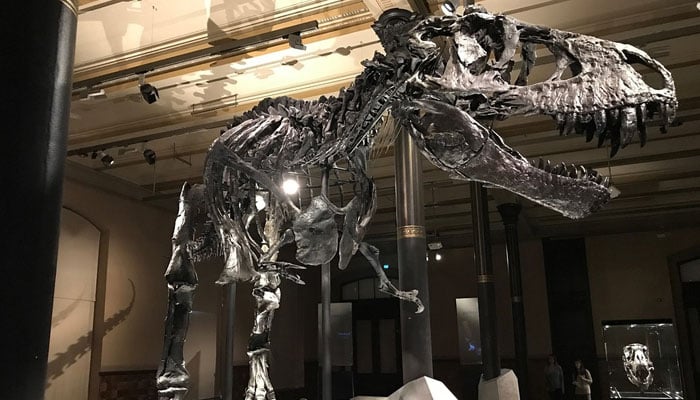New research bites into old Jurassic era T-rex population estimates

The fans of Tyrannosaurus rex or T-rex have always wondered about the population of this dinosaur which was estimated to be up to 2.5 billion earlier, however, a recent study has challenged the figure and claims the number to be around 1.7 billion throughout the history of Earth.
The earlier figure was suggested in 2021 in the journal Science about this creature that lived between 68 and 65.5 million years ago, however, the latest study published this year in the journal Palaeontology has challenged that number and suggested the number closer to 1.7 billion.
The author of the study and an evolutionary ecologist at the Johannes Gutenberg University of Mainz in Germany Eva Griebeler told Live Science that her new model “factored in information about T-rex that the original study’s authors overlooked, which resulted in the reduced number.”
A palaeontologist at the University of California, Berkeley and lead author of the 2021 study Charles Marshall, told Live Science that “the result is a more well-rounded study that improves upon the original team’s work.”

In the study conducted two years earlier, Marshall’s team created a complex model that factored in a number of different variables — such as average body mass, population density, approximate geographic range, age of sexual maturity, number of eggs laid, average lifespan, survival rates and generation time — to determine the number of T-rex.
Their model suggested that each T-rex generation likely consisted of around 20,000 individuals and around 125,000 generations in the 2.5 million years they existed — meaning 2.5 billion T. rexes in total.
On the contrary, Griebeler did not agree with some of the data and believed that Marshall’s team overestimated the survival rates and egg-laying capabilities of T-rex and the number of generations that existed during this time.
Griebeler then published research shortly after the original study and revealed these values were likely more similar to those seen in modern birds and reptiles.
When these values were imputed into an updated model, it revealed that there were 19,000 individuals in each T-rex generation and that there were only around 90,000 generations, meaning the maximum number of T-rex to exist was 1.7 billion.
The original study estimating more than 2 billion T-rex was the first to assess the T-rex population on Earth and “was driven in part by pure curiosity,” said Marshall, adding that “it was like wondering how many stars there are in the sky.”
Marshall noted: “As a result, the team was happy to have come up with a decent estimate at all. But the researchers are glad that it has now been updated to a “more realistic estimate.”
There’s a curiosity about where the remnants of the T-Rex are if there was such a large population.
“If Griebeler’s predictions are correct, it means that we have only found the remains of 0.0000002% of these giant dinosaurs. This is an important question that requires further research,” Marshall said.